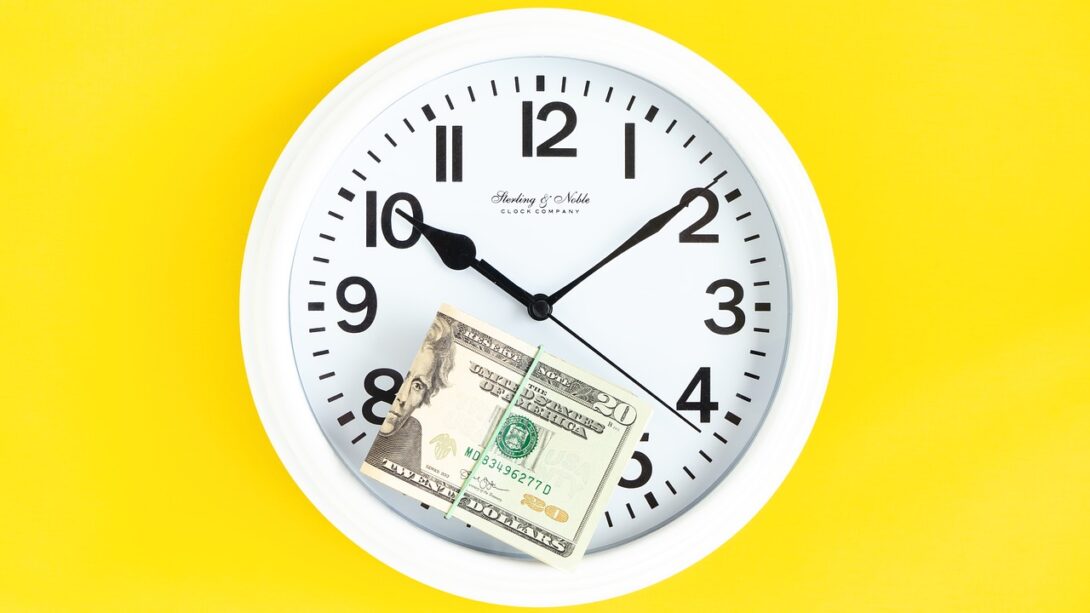Time has a significant impact on the value of money. Undoubtedly, money available today is worth more than the same amount in future. It is because of its potential earning capacity and inflation. For example, Rs.1000 has more purchasing power today than it received in 5 years. At 5% annual inflation rate Rs.1000 will be Rs.500 in 14 years. Time value of money (TVM) has an important role in financial planning. While making financial decisions, it’s important to consider it. This article will explain what TVM means and how it can affect your financial decisions. TVM includes 5 variables: Present Value (PV), Future Value (FV), Number of Periods (N), Interest Rate (I), Payment Amount (PMT). The concept of the time value of money (TVM) is easily one of the most valuable and important skills you can learn as an investor.
Components
Present Value (PV): It is the current value of money that we will receive in the future. It’s formula is PV = FV / (1 + i)n
Future Value (FV): It is the value of money receive on some date in the future. It’s formula is FV = PV (1+i)n
Interest Rate (I): It is the rate or percentage (%), that we apply to sum of money to calculate its future value. It can be compounding or discounting rate.
No. of Periods (N): It is the number of periods which is used to calculate future value of money. It can be annually, semi-annually, quarterly, monthly, weekly etc.
Payment (PMT): It also referred as installments. It can be paid or received during certain period. EMI, insurance premiums, pensions etc., are the example of payments.
Calculation Mode
There are 2 ways to calculate the Time Value of Money – Financial Calculator & Excel.
1) Financial Calculator – https://www.casioindiashop.com/Calculators/C38/Casio-FC-200V-Financial-Calculators
2) Excel – https://www.youtube.com/watch?v=p08aOTG3CTw
Most Financial Advisors & Financial Planners use financial calculators, while we can use Excel for TVM calculation.
Explaination
Pravin wishes to make an investment in mutual fund. He invests Rs.10,000 lumpsum & started Rs.1000 through SIP for 5 years. The rate of return is 12%. After 5 years he gets total Rs.98,727. So, in this example, Rs.10,000 is PV, Rs.98,727 is FV, Interest (I) is 12%, 5 years is No. Of Periods, and Payment (PMT) is Rs.1000.
From above example, you think how it is useful in our life. However, TVM has many uses in one’s financial life. TVM can determine how investment amount should be invested to meet our goals. It can help us to calculate retirement needs & tax planning. It also helps in life insurance area to calculate one’s life insurance needs.
Illustration
Tushar is a traveler, and he visits a new country in every 3 years. This time he wants to go on the trip to Australia. The cost of one month trip is Rs.3,50,000 in today’s terms. In effect of inflation the cost of trip is increasing 5% every year. Currently, average rate of return in mutual fund is 12%. So, we will calculate much money will Tushar requires to make this trip after 3 years and today what amount should he invest to make this trip happen.
We will calculate it by using time value of money functions. It has 2 steps.
Step 1: First we will calculate cost of trip after 5 years.
| PV = 3,50,000 | I = 5% | N = 3 | FV =? | PMT = 0 | Answer (FV) = 4,05,168 |
Cost of Rs.3,50,000 will become Rs.4,05,168 after 3 years. That means, Tushar need Rs.4,05,168 for cost of trip after 3 years.
Step 2: Now, we will calculate what amount need to invest at 12% to get Rs.4,05,168 cost of price.
| PV =? | I = 12% | N = 3 | FV = 4,05,168 | PMT = 0 | Answer (PV) = 2,88,391 |
By calculating above, the amount will get is Rs.2,88,391. So, Tushar needs to invest Rs.2,88,391 today to go on the trip to Australia.
Alternatively, if Tushar has not a lumpsum investment of Rs.2,88,391, then he can also invest through monthly SIP. So here it can be calculated by PMT option of TVM.
| PV = 0 | I = 12% | N = 36 | FV = 4,05,168 | PMT =? | Answer (PMT) = 9,405 |
So, he must invest monthly Rs.9,405 to get Rs.4,05,168 after 3 years.
TVM in Insurance
In India, insurance is seen as investment product. Insurance companies sells endowment, money-back, guarantee return policies in the name of insurance. Obviously, in these policies coverage of life is very low, and amount is invested in different asset classes. With the help of TVM, we can also calculate how much percentage or rate of return we earn in these policies.
Illustration
Paresh has an endowment insurance policy of Rs.5,00,000 for 10 years. The policy amount will proceed in 2 situations. First after his death and second on maturity. He pays premium of Rs.3000 monthly to get the death and maturity benefits. If we calculate by using TVM function-
| PV = 0 | I =? | N = 120 | FV = 5,00,000 | PMT = 3000 | Answer (I) = 6.40% |
The rate of return he will get is 6.40% in this policy.
So, you are still thinking how this will help us. If you want 6.40% return on investment, you can simply put your money in bank’s Fixed Deposit and for insurance coverage you can purchase Term Plan which is pure insurance and has very low premium & broader coverage.
Rule of 72
Most of the people are not aware about the Rule of 72. Basically, it determines how long it will take an investment to double or rate of return required for investment to double in value.
1) To calculate the number of years required to double the investment, 72 is divided by annual interest rate. It is not completely accurate but it is very close.
Example: If you invest Rs.10,000 at 8% in Fixed Deposit, it will get approximately 9 years (72/8) to double your money which is Rs.20,000.
2) If you want interest rate of an investment to double your money, simply divide 72 by number of years.
Example: You invest Rs.10,000 in Corporate Bonds and it gets double in 8 years. So, your investment grows @9% (72/8).
So how did it help us? Suppose you have a goal of purchasing a new car in 5 years. You can compare the investment options and accordingly invest in it.
Example: If stock market is giving average 15% returns, so your money will be double in 4 years and 8 months approximately. Similarly bank’s fixed deposit is giving average 8% return, then your money will be double in 9 years approximately.
Through this comparison, you know that your goal tenure is 5 years so you should invest in stock market or mutual funds.



Very Useful information
Thank You, Sudhakar